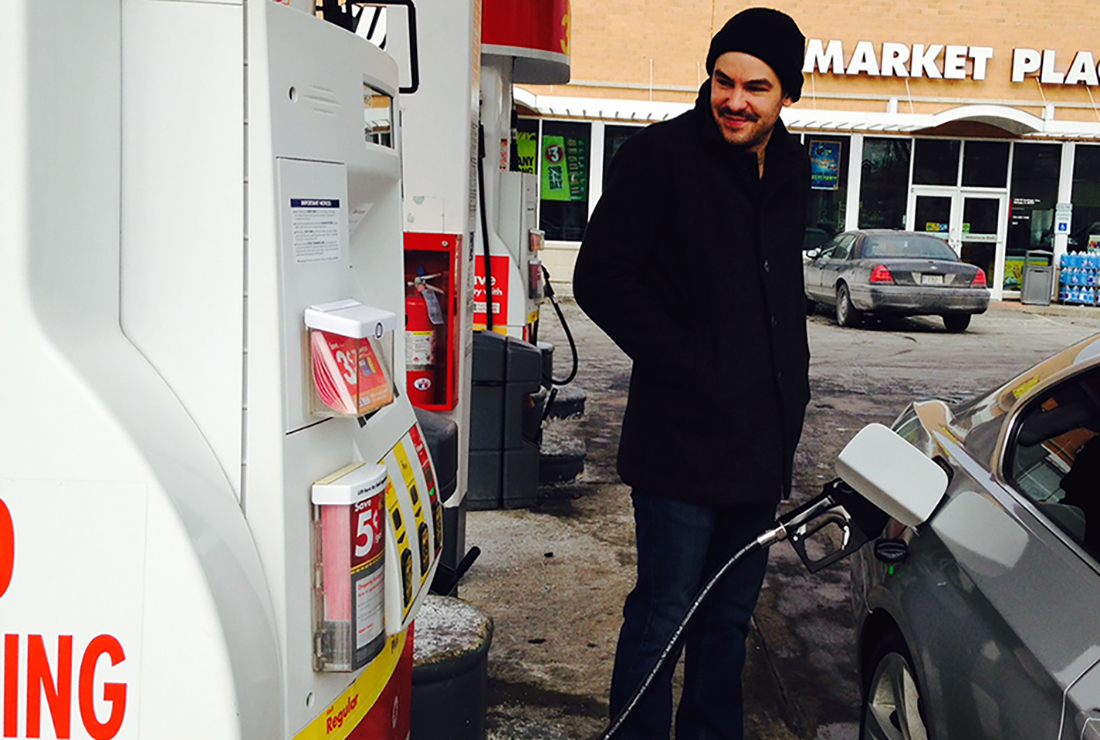By Bethel Habte
With oil prices at historic lows, consumers could pad their pockets with money they’re saving at the pump. While many economists predicted stronger consumer spending in areas like retail with this gas windfall, drivers have other financial priorities in mind.
The U.S. Energy Information Administration forecasts that the average U.S. consumer will spend nearly $550 less on gas in 2015 than in 2014. Meanwhile, a U.S. Department of Commerce report released this month showed that personal income increased $41.3 billion, or 0.3 percent, in December and a total of 3.9 percent in 2014 compared with 2.0 percent in 2013.
Grant Erwin, 31, the owner of a full-size Chevy Silverado, is now able to fill his tank with $60, down from nearly $90 a year ago.
“Honestly, now I’m a little more willing to drive,” he said, noting one extra trip to Iowa to see his family. “I don’t worry as much about the price of gas now.”
The EIA also predicts that drivers can expect lower gas prices for the remainder of the year. Total average household expenditures on motor oil and gasoline in 2015 are projected to be the lowest in 11 years.
Though economists expected consumers to spend their excess dollars on retail purchases, recent reports paint a different picture. December and January saw the first back-to-back monthly declines of retail sales since mid-2012. December retail sales were down 9 percent from the year-earlier period, 9 percentage points below the consensus estimate. January fared only slightly better with retail sales down 8 percent from the year-earlier period, 4 percentage points below the estimate.
But the food services and drinking establishments category in the report provided a bright spot – sales were up 11.3 percent in January from a year earlier.
“You are seeing some categories benefitting,” said Morningstar Inc.’s RJ Hottovy said of the bump in restaurant sales. “But for the most part I think the freedom of spending is being offset by other pressures.”
Hottovy said cost of living increases in categories like rent and healthcare are muting the benefit of lower gas prices.
“You still have a number of other headwinds that are really keeping a lid on overall consumer spending,” he said.
Consumers could be feeling the residual effect of harder economic times, according to Scott Baker, assistant professor of finance at the Kellogg School of Management at Northwestern University.
In a paper published this month, Baker explained that “the impact on real consumption decisions comes…from the diminished liquidity and borrowing capacity” of households. Baker believes consumers will decide to spend only when they feel they have sufficient liquid assets.
Consumers “may be taking advantage of this decline in gas prices to build up some liquid savings,” Baker said in an interview.
The personal savings rate was 4.9 percent in December 2014, compared with 4.3 percent in November, while personal consumption decreased $40 billion, or .3 percent.
But economist Scott Hoyt, senior director for Moody’s Analytics, doesn’t believe the savings trend will continue, opining that consumers may simply not realize the true size of their windfall.
“A windfall of any sort will take time to show up,” he said.
Some consumers, on the other hand, sense that the days of low gas prices are numbered.

“It won’t last,” motorist Kenneth Gills, 32, said as went to fill up his mid-sized BMW for about $40, down from $60 a year ago. “It’ll go back up. It’s a limited resource.”
Erwin, the Silverado driver, agreed. Aside from his extra trip to Iowa, Erwin said he hasn’t changed his driving habits dramatically.
“I don’t anticipate it lasting long-term,” Erwin said.
As for the money he saves at the tank?
“Right now, it basically goes into savings.”

